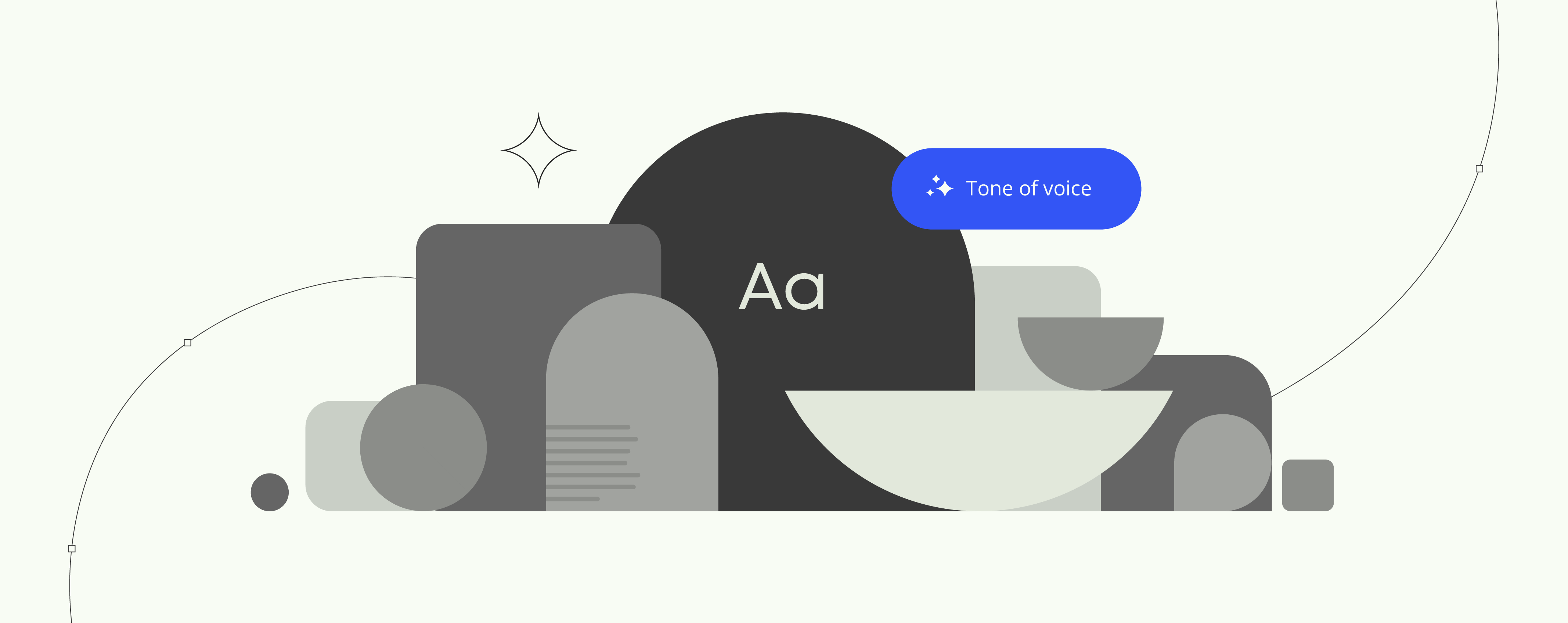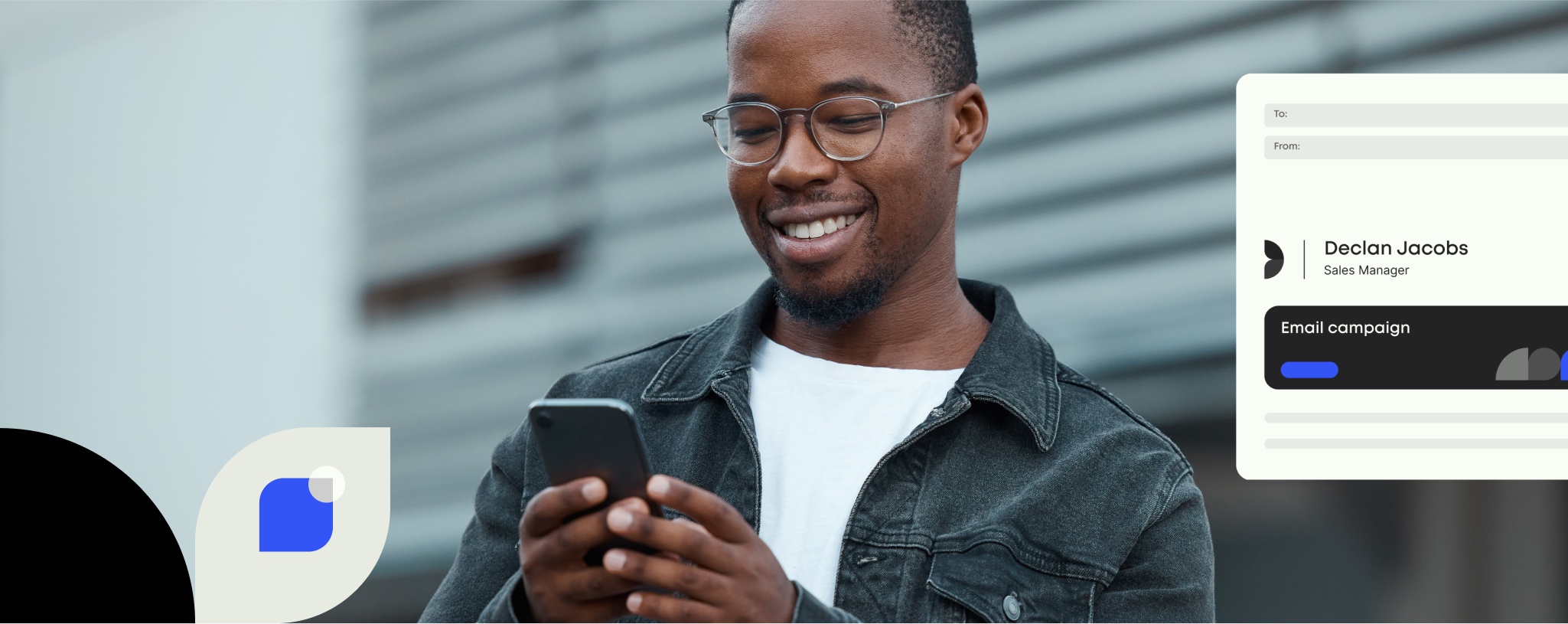About corporate branding and how it differs from smaller organizations

In the headquarters of McDonalds, executives constantly remind colleagues of a company adage: “If you see a man in a $300 suit picking up paper in the parking lot, you’d better get out there and help him, because it’s Ray Kroc.”
That is because Ray Kroc was so obsessed with McDonalds’ reputation for cleanliness that he would pick up the trash himself and shout at the local owner for not keeping the place tidy.
What is corporate branding?
It is precisely what Kroc was doing. When he cleaned each McDonalds outlet by himself, he maintained a consistent image of the company for outsiders and employees. That’s why McDonalds evokes the same picture everywhere you find it – happy meals for the kids, road trip food, dollar menu…and a clean premise.
Learn how Templafy can help with Corporate Branding
Branding is to business what decorum is to people. Much the way everyone from analysts to vice presidents in New York banks come in freshly pressed, spotless shirts every morning to show a professional image, so do entire businesses maintain everything from their ads, websites, outdoor signs, and even internal business documents in a way that their aesthetics are consistent. If the aesthetics are not consistent – How could the product be consistent? How could customer support be consistent? How could the price and quality be consistent?
More than consistency, it’s also important that as the business changes, so does its brand.
Corporate branding example: AirBnB
AirBnB’s change from startup to global unicorn shows us one of these examples of corporate branding changes. Earlier, it saw itself as just a technology company and a platform. However, AirBnB’s user community grew to the size of a massive organization by itself. That’s when AirBnB decided its message had to be about community and belonging. This prompted AirBnB to change everything from its logos to pictures to designs to its entire communications style with customers and the customer journey in the website.
AirBnB shows that the definition of corporate branding changes for small businesses and for enterprises in that branding for small businesses is only about the product and the website, while branding for enterprises affects all internal and external communication by the corporation.
If you head the IT team for an enterprise, you may ask, “How is this any of my business? I just keep the software updated and the systems running.” This is correct. But that is why the heads of IT need to find a way to automate the work to maintain corporate branding identity. A small business can keep on-brand digital templates and assets within the Office applications for each user. But a large enterprise needs to manage these templates through a centralized administration system.
BDO Norway: From one office to 70
Consider BDO Norway as a corporate branding example. As a single office company back in 1988 (as A/S Revisjon), this accounting firm had no troubles with branding – all it had to do was focus on building a font, logos, and a design style for presentations, reports, and documents, and then reuse them as templates repeatedly. However, once the firm had 70 offices in Norway, nearly every office ended up using a different template for their documents. As an international accounting firm, brand integrity is vital and that entails consistently using up-to-date document templates and digital assets.
At that point, BDO Norway realized it had to move from small business branding to corporate branding. Small business branding is just about logos and consistent visual features. However, corporate branding requires making sure that every activity the business undertakes communicates the same message. And to make sure that the same message is communicated, there must be one centralized team.
That is why BDO Norway used Templafy to offer its employees access to up-to-date templates, images, and logos from a single taskpane. No longer did employees have to worry about using outdated templates when the new templates were launched, and they saved time by having them where they needed them, such as in Word. This ensured that documents produced from any office of BDO Norway had the same look and structure, and hence, they would be reliable auditors for your company. Now, branding could be controlled in a centralized manner, Templafy’s BrandChecker feature could be used to ensure compliance, and employees would only focus on the content and not brand integrity.
How else does small company branding differ from corporate branding?
- For small businesses, some employees develop one “killer” presentation style, and everyone else reuses it. In a large business, people compete to create better and better presentations, until every presentation has a different look. Having control over the look of every person’s output becomes important.
- A brand change in a small business requires a brief meeting. A brand relaunch for a large enterprise requires overhauling every single department and their IT and physical resources – often forcing everyone to redo their work to be brand compliant.
- Many small businesses ensure that each employee takes charge of learning about the brand and being brand compliant. But for enterprises, employees can lose time and it becomes necessary to find a way to automate brand compliance so everyone can focus on core tasks.
Are you a head of enterprise technology who is often asked to update the systems to manage brand compliance? Or are you a brand manager who wants to assure your company brand stays consistent? We at Templafy want to make this job easier for you, by automating this process through a centrally managed system.
“Document management software for use in all companies”
What do you like best?
Helps us design and share business documents and templates easily across our organization with ease and convenience.
Its fairly priced and not costly boosting the reliability and affordability of the software.
Everything shared is done and saved on cloud making them safe and secure.
What do you dislike?
Not much that i don’t like about the software but when the internet connection is not secure, there are bound to some problems in using the software.
Recommendations to others considering the product:
Its affordable and easy to use and it will boost the way you create and share documents across the organization.
What problems are you solving with the product? What benefits have you realized?
Templafy has become our preferred document and content management platform due to its effectiveness and suitability for use in all organizations. It has enabled us to share content and documents easily where they improve the way we work and enhance our working, making us swift and efficient in executing our workflows.
Rodgers A. June 25
“The future of documents”
What do you like best?
Templafy has made storing and acceding agendas, and minutes a breeze. I can pull what I need in a matter of minutes instead of waiting on someone to email or hand deliver.
What do you dislike?
no dislikes other than the fact that everything is being done electronic. this takes a ay from face time in an office environement.
What problems are you solving with the product? What benefits have you realized?
no problems but I have realized that our teams seem to be more organized since using templafy.
Administrator. June 18
“Making room for everyone.”
What do you like best?
Templafy is very user friendly. It automatically opens when I open Word and gives me access to a variety of different documents and presentations at the click of a button. Before Templafy, I found it difficult to know which documents to use and spent time either asking for the right version or creating a new document from scratch. Templafy saves me time and I love that I can trust the documents I’m using.
What do you dislike?
There is nothing to dislike in this beautiful platform. I would highly recommend this platform to all the customers or clients.
Recommendations to others considering the product:
I would highly recommend this beautiful platform to all the customers or clients.
What problems are you solving with the product? What benefits have you realized?
Before Templafy, I found it difficult to know which documents to use and spent time either asking for the right version or creating a new document from scratch. Templafy saves me time and I love that I can trust the documents I’m using.
User. June 16
“It is a beautiful experience.”
What do you like best?
What is most helpful is how simple it is.
What do you dislike?
What I dislike is the arrangement of where the buttons are.
What problems are you solving with the product? What benefits have you realized?
The problems I am solving is a messy work environment.
User. June 13
“Configure very all your documents.”
What do you like best?
With this software we can improve and have a good appearance of the documents, design templates, everything is really easy.
What do you dislike?
There is nothing wrong with this program, in fact everything in it is wonderful.
Recommendations to others considering the product:
We have a good administration of all the documents and templates created, it is simple and quick to use, there is no complication which makes it more pleasant.
What problems are you solving with the product? What benefits have you realized?
It is an easy-to-use platform, with a variety of options to use our documents with much more confidence. Once it is installed as it should be everything is very easy.
Savannah M. June 13
“Life Saver!”
What do you like best?
Templafy allows us to support our Sales and Customer Service departments in ways we previously couldn’t. The ability to have all customizable content in one location and make sure everyone is working from the most recent version is outstanding. On top of that, the ability to add image and slide libraries allows us to offer a new level of personalization for our customers too.
What do you dislike?
The only disadvantage I’ve come across so far is not being able to see data around usage. You currently have to manually request this from your Customer Success Manager. It is easy to do that and our point of contact is always quick to reply. It would just be nice to have that available on-demand.
What problems are you solving with the product? What benefits have you realized?
We sell a service that is highly customized (we have more than 200 combinations). Previously, we would have to create a template for each version that a customer may need. Now, we can create one or two templates, setup a form with a few options, and easily have our Sales and Customer Service colleagues create the version of the customer support piece that they need. It has dramatically reduced the time it takes to maintain our templates. Additionally, it has assisted with best practice adoption. Instead of having a multitude of support pieces floating around the office, we now have a few streamlined pieces which are now the main go-tos.
Internal Consultant. June 13
“Making Room for Everyone“
What do you like best?
The Template quality best practices and the set of contents that they provide make a customer’s life very easy to simplify their business.
What do you dislike?
No cons at this time. This can be made a opensource tool indeed.
Recommendations to others considering the product:
Very positive experience would recommend to other folks to definitely use this product and to make the most out of this.
What problems are you solving with the product? What benefits have you realized?
Templafy brings custom company templates, brand assets, and best practice content together directly inside any office application, streamlining how users create on-brand and compliant documents, presentations, and emails. With Templafy, global businesses safeguard their brand integrity and increase productivity through a centrally governed, secure and easy to use the platform.
Ankan M. March 14
“User freindly and easy acces to a variety of different templates.”
What do you like best?
Templafy is very user friendly. It automatically opens when I open Word and gives me access to a variety of different documents and presentations at the click of a button. Before Templafy, I found it difficult to know which documents to use and spent time either asking for the right version or creating a new document from scratch. Templafy saves me time and I love that I can trust the documents I’m using.
What do you dislike?
Double authentication is a bit of hassle sometimes, but we have very strict security protocols, so it makes sense. Also, when I am in a rush to a meeting and just need to go ower the document once more, it can be a bit annoying if the Templafy application takes some of the extra loading time, but that could also just be the internal systems we have.
Recommendations to others considering the product:
Give it a try! It’s one of those things you didn’t know existed until you heard of it and then you suddenly have a hard time imagining worklife without it.
What problems are you solving with the product? What benefits have you realized?
It is always a problem staying up-to date on the newest templates and logos, but Templafy makes all of that so easy. I am also a big fan of the fact that I know where everything is in a easily searchable menu. It’s one of the best productivity increasing tools out there for my type of work. As an accountant, it’s incredibly important that the information that I send clients is accurate and up to date. With Templafy, I can trust that this is always the case.
Nikolaj R. October 11, 2017


